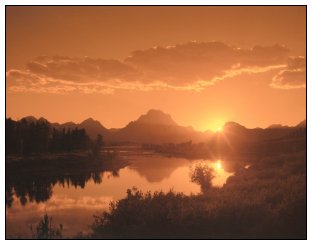The Snake River
Situated in the Pacific Northwestern part of the United States, the Snake River is the largest tributary of the Columbia River and has a discharge of 50,000 cubic feet of water per second. The Snake River has a length of 1,038 miles (1,670 km) and runs through several gorges, including Hells Canyon, which has a maximum depth of 7,900 feet (2,410m) and is one of the world’s deepest gorges. The Snake also runs through 31 counties.
depth of 7,900 feet (2,410m) and is one of the world’s deepest gorges. The Snake also runs through 31 counties.
Starting Point for the Snake River
The Snake River originates in Yellowstone National Park near the Continental Divide. It flows south until it reaches Jackson Lake and then passes the town of Jackson. The river flows down the Snake River Canyon in Wyoming and enters Idaho at the Palisades Reservoirs. Near Rigby, it joins Henry’s Fork River. The Snake River flows across southern Idaho, following the Snake River Plain. The Snake Plain rim overflows into the Snake River canyon near Twin Falls and then flows to the border of Boise and Idaho/Oregon. From there the river flows north through Hell’s Canyon and passes the cities of Lewiston in Idaho and Clarkston in Washington. Near Pasco, Washington, the Snake River flows into the Columbia River.
The Snake River and Lewis & Clark
The Snake River was first explored by Captain William Clark from the Louis and Clark Expedition (1803-1806) who followed the Columbia River on their way to the Pacific Ocean. The Snake River had several names before it was finally called the Snake River. Over the years, it has had names such as the Lewis River, the Lewis Fork, the Great Snake River, and the Mad River. The Wampum, Yakima, and Walla Walla Indians first lived in the area called the river the Shoshone River, the Saptin River, and the Yam-pah-pa River.
The Snake River and the Shoshone Indians
A possible explanation of why the river is called the Snake River is that the Shoshone Indians who lived in the area could not speak the language of the explorers whom they met. Because the river is rich in salmon, the Indians used their hands to make an S-shape (like a snake) to demonstrate the swimming salmon in the river to demonstrate that they were talking about the Snake River.
Tributaries, Dams, and the Snake River
The Snake River has several tributaries, which include the Teton River, the Salmon River, the Henrys Fork River, the Boise River, and the Clearwater River. The Snake River has 24 dams from the headwaters to the termination. Only one dam is in Wyoming, the Jackson Lake Dam. Washington has four dams, the Lower Granite Lock and Dam, Little Goose Lock and Dam, Lower Monumental Lock and Dam, and the Ice Harbor Lock and Dam. The rest of the dams are in Idaho.
The Beautiful Landscape of the Snake River
As the Snake River runs through several gorges and is surrounded by beautiful landscapes, the Snake River is home to a variety of outdoor sporting activities, which include fly fishing, hiking, biking, and horseback riding. People also enjoy playing golf on the banks of the Snake River.
The Snake River and Hydroelectricity
Like the Columbia River, the Snake River also has a large number of dams that generate hydroelectricity. These hydropower dams are a major source of electricity for the surrounding cities. Not only does it provide electricity, but another advantage of the dams is that they provide irrigation for several projects. Unfortunately, all these dams can have a negative effect on wildlife, especially on the salmon numbers, for it does not allow the salmon to migrate. The possibility of removing a few of the smaller dams is currently being investigated.
Related Resources for Along the River's Path:
- Land of Three Rivers
- Kennewick Rivers
- The Columbia River
- The Snake River
- River Recreation
- Port of Pasco
- Richland Steelhead Fishing
- Kennewick Water Follies
- Hydroplane Races
- Naturalist's Paradise
